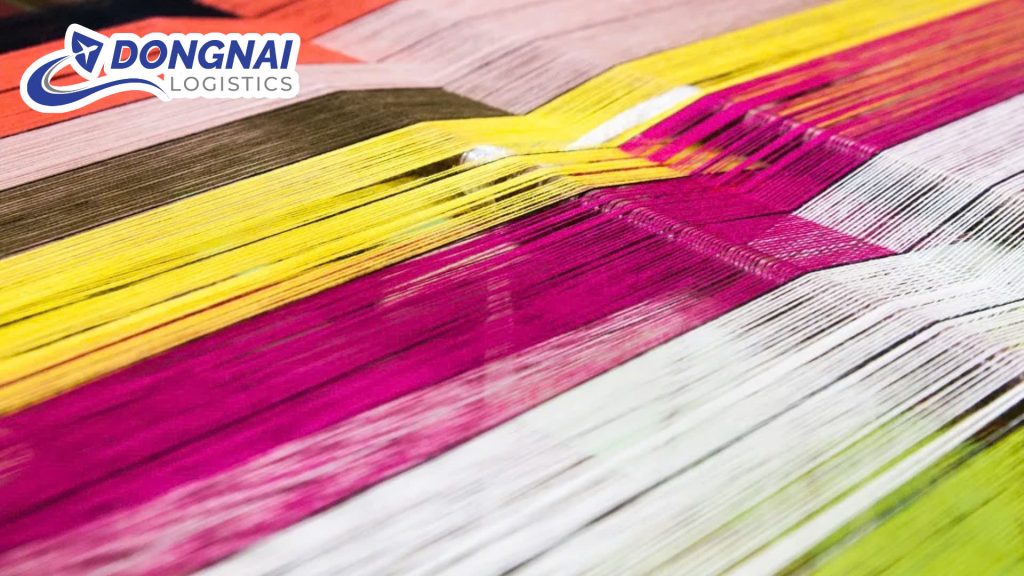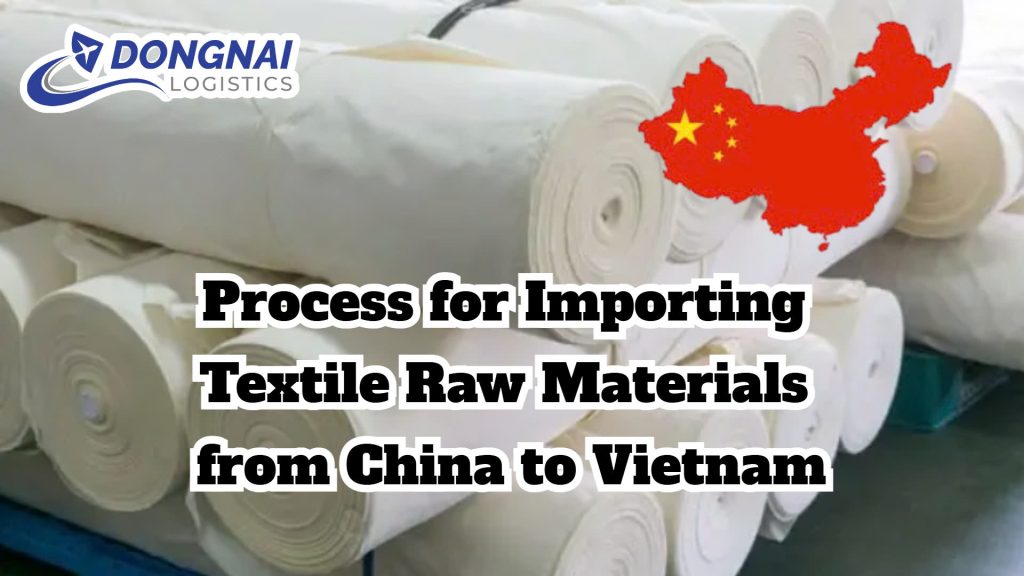Process for Importing Textile Raw Materials from China to Vietnam
Importing textile raw materials from China to Vietnam is a complex process that requires careful preparation and adherence to various steps to ensure that goods are cleared through customs in a timely and legal manner. Below is a detailed overview of the process and the necessary steps involved:
1. Research and Select Suppliers
- Finding Suppliers: Utilize e-commerce platforms such as Alibaba, Taobao, or 1688 to search for suppliers of textile raw materials. It’s also advisable to consult forums, social media groups, or business networks for additional information.
- Evaluating Suppliers: Check supplier ratings, customer feedback, operational history, and product quality certifications. Request samples to assess quality before placing large orders.
2. Negotiation and Order Placement
- Negotiating Prices and Terms: Contact suppliers to negotiate pricing, delivery terms (FOB, CIF, EXW), and shipping timelines. Discuss payment terms clearly, such as advance deposits or payment upon receipt of goods.
- Formal Order Placement: Once an agreement is reached, draft a purchase contract that outlines all terms and conditions, and ask for confirmation from the supplier. The contract should include details about quantity, quality, and delivery schedules.
3. Prepare Documentation and Customs Procedures
- Necessary Documentation: Prepare the essential documents for the import process, including:
- Purchase contract
- Commercial invoice
- Packing list
- Certificate of Origin (C/O)
- Phytosanitary certificates (if required)
- Detailed product list
- Customs Registration: If you do not have a customs account, register with the customs authority. Prepare documents such as the business license, tax code, and other relevant paperwork.
4. Choose a Shipping Service
- Select Shipping Method: Depending on the volume and nature of the goods, choose between air freight or sea freight. Air freight is typically faster but more expensive, while sea freight is more economical but takes longer.
- Contact a Logistics Company: Choose a reputable logistics company to assist with arranging transportation. This company will help manage transport and delivery issues.x
5. Carry Out Customs Procedures
- Submit Customs Documentation: After the goods arrive at the import port, submit the required documentation to the customs authority. Ensure that the paperwork is complete and accurate to avoid rejection.
- Goods Inspection: The customs authority may conduct inspections to ensure that the imported goods comply with quality standards and legal regulations. Non-compliance may result in penalties or confiscation.
6. Receive and Inspect Goods
- Receiving Goods: Once customs clearance is complete, proceed to receive the goods at the warehouse or port. Have staff on hand to verify that the received quantities and quality match the order.
- Quality Inspection: Thoroughly inspect the goods to ensure there is no damage, shortages, or discrepancies compared to the order. If issues are found, contact the supplier immediately for resolution.
7. Storage and Inventory Management

- Store Goods Safely: Place the goods in a secure storage facility, ensuring that conditions are suitable for the specific type of raw materials. Implement a warehouse management system to track inventory.
- Inventory Management: Monitor inventory levels to ensure timely supply for production. Utilize inventory management software to optimize this process and minimize waste.
8. Compliance with Regulations and Procedures
- Adhere to Import Regulations: Ensure that all import regulations, taxes, and quality standards are complied with to avoid legal risks. Stay updated on new regulations from customs authorities and related organizations.
- Reporting and Statistics: Prepare reports on the import process and inventory management for future business activities. This will help evaluate the efficiency of imports and assist in planning future import activities.
9. Support and Consulting
- Consult Experts: If the business encounters difficulties in the import process, consider reaching out to logistics or customs consulting experts for assistance. They can provide in-depth knowledge and help the business save time and costs.
The process of importing textile raw materials from China requires meticulous preparation and strict adherence to legal regulations. By following these steps, businesses can optimize their import processes, minimize risks, and enhance production efficiency.
Conclusion
Importing textile raw materials from China to Vietnam is a multifaceted process that demands careful planning and execution. By following the outlined steps—from selecting reliable suppliers and negotiating favorable terms to ensuring compliance with customs regulations—businesses can navigate the complexities of international trade more effectively.
Successful importation not only hinges on meticulous documentation and adherence to legal requirements but also on maintaining strong relationships with suppliers and logistics partners. By leveraging technology for inventory management and staying informed about regulatory changes, companies can streamline their operations and reduce potential risks.
Ultimately, a well-managed import process can lead to enhanced production capabilities, cost efficiencies, and a competitive edge in the textile industry. With the right strategies in place, businesses can thrive in the dynamic landscape of global trade.
Vận tải biển: Xương sống của chuỗi cung ứng toàn cầu
Vải Vận Chuyển Từ Đồng Nai Sang Phần Lan Bằng Đường Biển
Vận chuyển hàng hóa từ Đồng Nai đi Phú Quốc
Chuyển phát nhanh từ Quảng Ninh đến Đồng Nai chất lượng, uy tín, giá cạnh tranh

